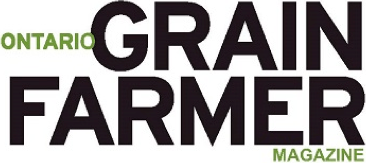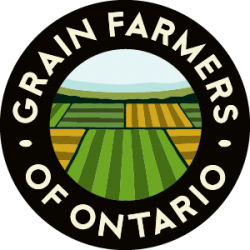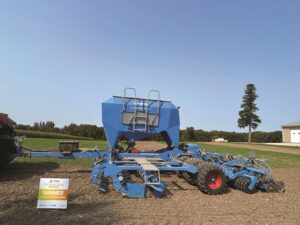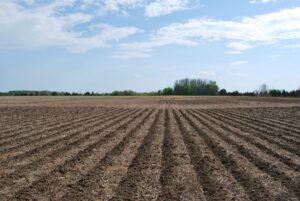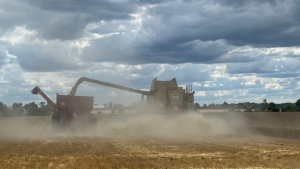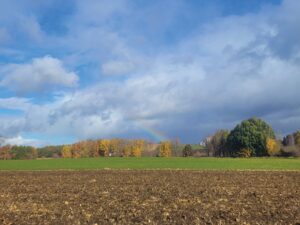Building better soil
Enhancing Ontario’s capacity for soil health assessment and interpretation

“Soil is essential to how we live. It’s critical to life,” said Senator Rob Black at a June 6, 2024, press conference highlighting the results of the Senate of Canada’s report, Critical Ground: Why Soil is Essential to Canada’s Economic, Environmental, Human, and Social Health. “Soil puts food on our table, it purifies our air and water, and it plays a key role in mitigating climate change.”
Ontario’s grain and oilseed farmers play a big role in protecting and enhancing the province’s soils, growing barley, corn, soybeans, oats, and wheat on six million acres of farmland. Collaboration among stakeholders, including farmers, governments, the University of Guelph, and other non-governmental organizations, is key to protecting and preserving this essential resource in Ontario and Canada.
The Soil Health and Assessment Plan (SHAP), a digital tool created by the Ontario Ministry of Agriculture, Food and Agribusiness (OMAFA), is one of the ways that stakeholders are working together—with the University of Guelph taking the lead in a project, the SHAP Ground-Truthing Project—to build a soil health database to enhance Ontario’s capacity for soil health assessment and interpretation.
WHAT IS SHAP?
SHAP is a digital tool, accessible by desktop or smartphone, that collects information about the soil and the way that it is managed, measures soil health indicators, and provides a framework for integrating and interpreting the information to improve soil management and soil health.
Farmers will have different reasons why they would use the tool, says OMAFA’s Jake Munroe, soil management specialist.
“The tool can be used to set a benchmark to compare to future assessments for identifying trends, understanding the most important limitations and risks to the soil’s productivity, and comparing good and poor areas of a field,” he says. “Defining a goal for the assessment will make it easier to decide which modules to include, and whether to take one sample representing a single location within a field or multiple samples in different zones of a field.”
Soil health samples from the selected fields are analyzed (with costs currently covered by the Ground-Truthing SHAP project), giving farmers detailed reports allowing them to benchmark and find potential for improvement.
SHAP includes five key soil health indicators: soil organic matter, active carbon, soil respiration, potentially mineralizable nitrogen, and aggregate stability. The results can then be compared against an extensive Ontario soil database, grouped by soil texture.
The information, says Munroe, can then be used to find ways to improve soil health.
“The in-field and web-based tools identify major soil degradation threats,” he says. A visual evaluation of soil structure, a water erosion risk map, a compaction risk calculator, and a living roots index are among the ways farmers can use the information to make a plan to improve their soil.
“The other benefit of the tool is its flexibility,” adds Munroe. “SHAP enables you to take a snapshot of the health of your soil or do a deep dive.”
GROUND-TRUTHING PROJECT
Soils at Guelph, a University of Guelph initiative focused on advancing sustainable soil management in Ontario, is embarking on a large- scale project, the SHAP Ground-Truthing Project, to add 1,000 more farms to the Ontario database of soils.
The project, says Heather White, knowledge mobilization and communication coordinator at Soils at Guelph, is an excellent opportunity for farmers to not only contribute to the gathering of benchmarking data, but also to get the information from the SHAP tool to better understand and improve the soil on their own farm.
Soils at Guelph will then, in turn, use the information to create resources for farmers.
“We can create resources that could address [farmers’ questions about their soil] so that the reports themselves become more meaningful as tools for making decisions about how to manage their soil going forward,” says White.
The program is free for farmers to participate, with Soils at Guelph covering the cost of the analysis of one sample per field; farmers can submit multiple samples.
“We’re hoping to get the 1,000 samples this season, and then next year we’re going to be going through all the data and making sense of it,” says White. “We’re going to continue to meet and engage with farmers and advisors to figure out how to best present the data, what makes it most meaningful for them to be able to make decisions from it.”
White emphasizes that the database contains aggregated data, meaning that individual farms’ data is anonymous and no personal information is shared. The data will then be available for collaborating organizations to use in soil-specific research.
HOW TO PARTICIPATE
Farmers interested in participating in the project can visit www.soilsatguelph.ca/soil-health-testing or email soils@uoguelph.ca. More information about SHAP can be found at www.fieldcropnews.com. •
